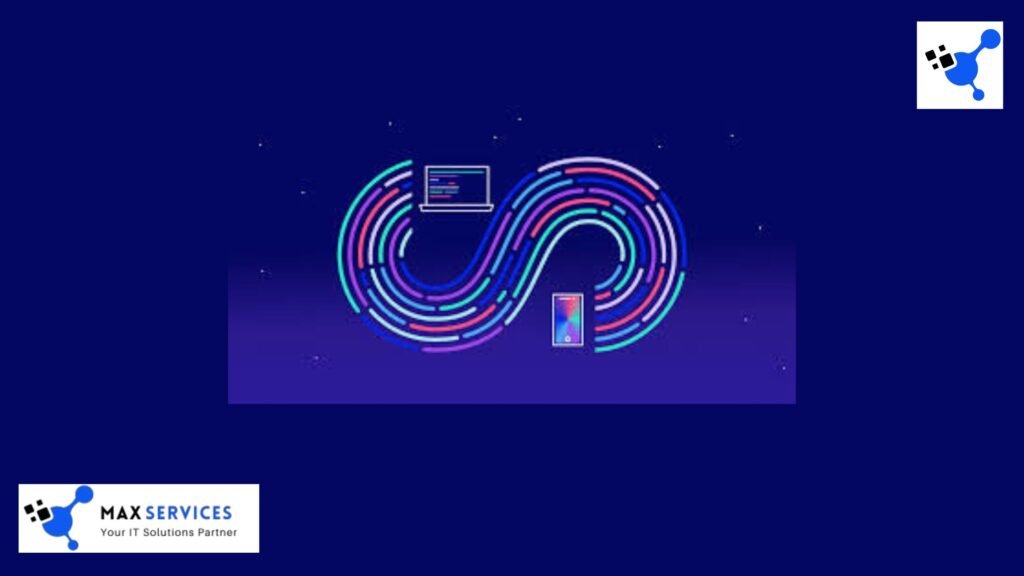
Continuous Integration and Continuous Delivery (CI/CD) has become the backbone of modern software development, enabling teams to deliver high-quality applications quickly and efficiently. Migrating to a robust CI/CD pipeline is essential for organizations aiming to streamline their software delivery processes and remain competitive in a fast-evolving technological landscape. However, a CI/CD migration is a complex endeavor that requires careful planning, execution, and continuous improvement to ensure success.
Understanding CI/CD Migration
Before diving into best practices, it’s important to define what CI/CD migration entails. CI/CD migration involves transitioning from an existing software delivery setup—often manual or partially automated—to a fully automated pipeline. This pipeline integrates web development, testing, and deployment processes to enable faster and more reliable software releases.
Organizations migrate to CI/CD systems for various reasons, including:
- Improved Efficiency: Automating repetitive tasks reduces manual effort and accelerates development cycles.
- Enhanced Quality: Continuous testing ensures that issues are identified and resolved early in the development lifecycle.
- Scalability: Automated pipelines can handle increased workloads as teams and projects grow.
- Competitive Advantage: Faster time-to-market allows organizations to respond to customer needs more effectively.
Challenges in CI/CD Migration

Migrating to a CI/CD pipeline is not without its challenges. Organizations often encounter obstacles such as:
Legacy Systems: Integrating CI/CD tools with outdated systems can be complex.
Team Resistance: Developers and operations teams may resist change due to a lack of familiarity with new tools or workflows.
Security Concerns: Ensuring the security of the CI/CD pipeline is critical to protect sensitive code and data.
Downtime Risks: A poorly planned migration can disrupt ongoing development and delivery processes.
Cost: Transitioning to a new CI/CD system may require significant investment in tools, infrastructure, and training.
Addressing these challenges requires a structured approach and adherence to best practices.
Best Practices for CI/CD Migration
Assess Your Current State
Begin by evaluating your existing software delivery processes. This assessment should include:
Process Mapping: Document current workflows, from code commit to deployment.
Tool Inventory: List all tools currently in use and assess their compatibility with CI/CD systems.
Pain Points: Highlight challenges such as long deployment times, manual testing, or inconsistent environments.
This evaluation provides a baseline for measuring the impact of your CI/CD migration.
Define Clear Objectives
Set specific, measurable goals for your CI/CD migration. Objectives might include:
Reducing deployment times by 50%.
Achieving 95% test coverage through automated testing.
Enabling daily or continuous deployments.
Having clear objectives ensures alignment across teams and helps measure the success of the migration.
Choose the Right Tools
Selecting the appropriate CI/CD tools is critical to the success of your migration. Consider factors such as:
Scalability: Can the tool handle your organization’s growth?
Integration: Does it integrate seamlessly with your existing systems?
Ease of Use: Is the tool user-friendly for developers and operations teams?
Community Support: Does the tool have a robust community or vendor support?
Popular CI/CD tools include Jenkins, GitHub Actions, GitLab CI/CD, CircleCI, and Azure DevOps.
Start Small and Scale Gradually
Avoid attempting a full-scale migration all at once. Instead, start with a pilot project:
Select non critical and small applications to migrate.
Use this project to test your CI/CD pipeline, identify potential issues, and refine workflows.
Gather feedback from the team and make necessary adjustments.
Once the pilot is successful, scale the CI/CD pipeline to other projects incrementally.
Automate Incrementally
Automation is a cornerstone of CI/CD, but it’s essential to implement it gradually:
- Start with Testing: Automate unit, integration, and regression tests first to ensure code quality.
- Add Deployment Automation: Once testing is automated, focus on automating deployment processes.
- Incorporate Monitoring: Implement automated monitoring to track application performance and identify issues post-deployment.
This incremental approach reduces the risk of errors and allows teams to adapt to new workflows.
Foster a DevOps Culture in CI/CD Migration
A successful CI/CD migration requires a cultural shift towards collaboration and shared responsibility. Encourage:
- Cross-Functional Teams: Break down silos between development, operations, and testing teams.
- Learning continued: CI/CD training is best practice and tool.
- Open Communication: Foster transparency and collaboration through regular meetings and updates.
Building a DevOps culture ensures that all stakeholders are invested in the success of the CI/CD migration.
Prioritize Security
Security must be a top priority during CI/CD migration. Best practices include:
- Access Control: Restrict access to the CI/CD pipeline to authorized personnel.
- Secrets Management: Use secure methods to store and manage credentials, such as Hashi Corp Vault or AWS Secrets Manager.
- Code Scanning: Integrate static and dynamic code analysis tools to identify vulnerabilities.
- Audit Trails: Maintain logs of all CI/CD activities for compliance and troubleshooting.
Monitor and Optimize

CI/CD migration is an ongoing process. Continuously monitor your pipeline to identify areas for improvement:
- Performance Metrics: Track deployment times, test success rates, and failure frequencies.
- Feedback Loops: Collect feedback from developers and operations teams to identify pain points.
- Iterative Improvements: Use the Plan-Do-Check-Act (PDCA) cycle to implement and refine changes.
Document Everything
Comprehensive documentation is essential for successful CI/CD migration. Document:
- Pipeline Workflows: Describe each stage of the CI/CD pipeline.
- Tool Configurations: Provide detailed setup instructions for CI/CD tools.
- Common Issues: List known challenges and their resolutions.
- Best Practices: Share tips and guidelines for using the CI/CD pipeline effectively.
Well-documented processes reduce onboarding time for new team members and ensure consistency across projects.
Measure Success
Finally, evaluate the impact of your CI/CD migration against your predefined objectives. Key metrics to track include:
- Deployment Frequency: How often are updates being deployed?
- Lead Time for Changes: How quickly can changes be delivered to production?
- Change Failure Rate: How often do deployments result in issues?
- Time to Recovery: How quickly can issues be resolved?
Conclusion
Migrating to a CI/CD devOps services pipeline is a transformative journey that can significantly enhance software delivery processes and drive business success. By following these best practices, organizations can navigate the complexities of CI/CD migration, minimize risks, and unlock the full potential of automated workflows. Remember, CI/CD migration is not a one-time effort but a continuous process of improvement. Embrace a culture of collaboration, learning, and innovation to ensure long-term success and scalability in an ever-evolving technological landscape. Team can minimize risks and achieve a successful migration, setting the stage for faster, more reliable software delivery.


